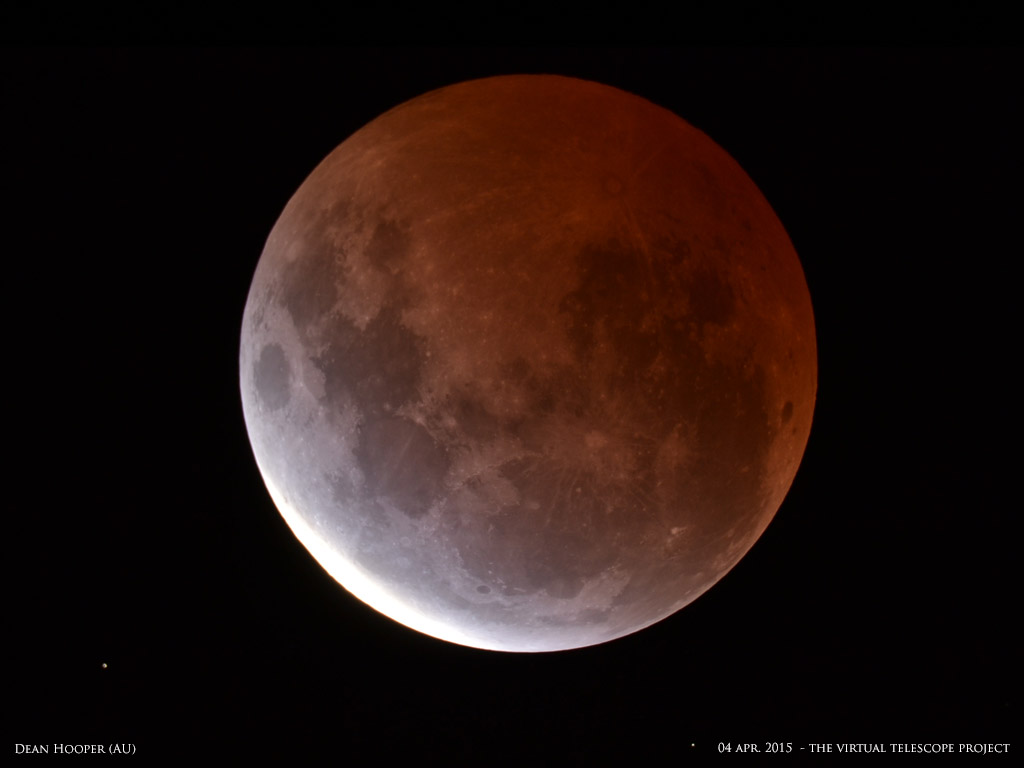Supermoon Lunar Eclipse Rises Tonight: Watch It Live in Slooh Webcast

In a total lunar eclipse this Sunday (Sept. 27), the surface of the moon will appear to be a deep crimson color, and people around the world will be able to watch the celestial spectacle online.
The so-called supermoon lunar eclipse will be visible in most of North America, South America, Europe, Africa, western Asia and the eastern Pacific Ocean. But wherever you are, you can watch the eclipse live via a webcast by the Slooh Community Observatory. The Slooh broadcast begins at 8 p.m. EDT (midnight GMT), and will provide views of the eclipse from three different countries, including a stream of the eclipse rising over Stonehenge in England, as well as expert commentary.
You can also watch the lunar eclipse webcast on Space.com, courtesy of Slooh. [Tonight's Total Lunar Eclipse: When and How to See It]

Slooh's tops the list of several live streams to see the lunar eclipse tonight by NASA, observatories and other skywatching groups. Lunar eclipses occur when the moon passes into Earth's shadow. A moon in this position is often called a "blood moon" because the lunar surface is colored red during the event. This is caused by sunlight passing through Earth's atmosphere before it hits the moon's surface.
This weekend's eclipse is particularly remarkable because it is also a supermoon, a full moon that takes place when the satellite is at its closest point to Earth in its orbit (also called perigee). A supermoon eclipse is a rare event: The last one took place in 1982, and the next one won't happen until 2033. There were only five total supermoon eclipses in the 20th century.
In addition, Sunday's full moon is a Harvest Moon, meaning it is the closest full moon to the autumnal equinox. As a result, Slooh has dubbed the event a "Mega Harvest Moon Eclipse."
The eclipse will begin when the tip of the moon enters the outer portion of the Earth's shadow, starting at about 8:11 p.m. EDT (0011 GMT). The moon will reach complete totality (it will be completely submerged in the darkest part of Earth's shadow) at about 10:47 p.m. EDT (0247 GMT). The eclipse will end at about 1:22 a.m. EDT (0522 GMT).
Get the Space.com Newsletter
Breaking space news, the latest updates on rocket launches, skywatching events and more!
Editor's note: If you snap a great photo of the supermoon total lunar eclipse tonight and want to share it for a possible story or gallery, send images and comments in to managing editor Tariq Malik at spacephotos@space.com.
Follow Calla Cofield @callacofield. Follow us @Spacedotcom, Facebook and Google+. Original article on Space.com.
Join our Space Forums to keep talking space on the latest missions, night sky and more! And if you have a news tip, correction or comment, let us know at: community@space.com.

Calla Cofield joined Space.com's crew in October 2014. She enjoys writing about black holes, exploding stars, ripples in space-time, science in comic books, and all the mysteries of the cosmos. Prior to joining Space.com Calla worked as a freelance writer, with her work appearing in APS News, Symmetry magazine, Scientific American, Nature News, Physics World, and others. From 2010 to 2014 she was a producer for The Physics Central Podcast. Previously, Calla worked at the American Museum of Natural History in New York City (hands down the best office building ever) and SLAC National Accelerator Laboratory in California. Calla studied physics at the University of Massachusetts, Amherst and is originally from Sandy, Utah. In 2018, Calla left Space.com to join NASA's Jet Propulsion Laboratory media team where she oversees astronomy, physics, exoplanets and the Cold Atom Lab mission. She has been underground at three of the largest particle accelerators in the world and would really like to know what the heck dark matter is. Contact Calla via: E-Mail – Twitter












